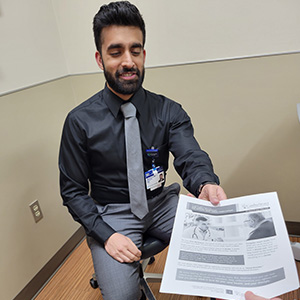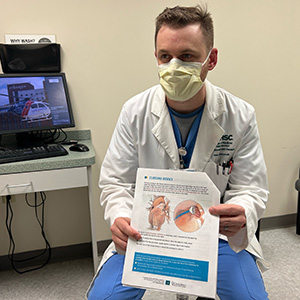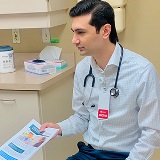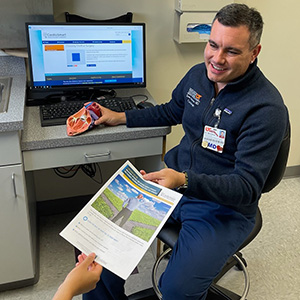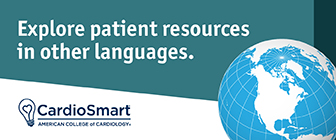Shared Decision-Making Challenge
The CardioSmart Challenge for FITs
Use a CardioSmart infographic or decision aid with 3-5 patients and submit an essay about your experience to the CardioSmart team. If your narrative effectively shows Shared Decision-Making in action, you could be our winner.
The Reward
CardioSmart/Patient Voice Team will select the best essay as the winner. The fellow will:
- Be featured in Cardiology magazine
- Receive free registration at ACC's Annual Scientific Session in Chicago, March 29-31, 2025
- Have an opportunity to present their narrative at ACC.25
The Timeline
- Oct. 7: Challenge launches
- Dec. 20: Deadline for fellows to submit write-ups to CardioSmart team
- Jan. 2-17: CardioSmart team reviews all submissions
- Jan. 20: Winner announced
- March 29-31: Winner presents narrative at ACC.25
Detailed Instructions
1. Fellows can use a CardioSmart decision aid or infographic of their choice. Essays should demonstrate how the tool supports a shared decision-making conversation.
Examples of Decision Aids
Examples of Infographics
When we say shared decision-making (SDM) as a cardiology community, we mean: A care team member opens the discussion about the health condition and introduces treatment options. The potential risks and benefits of the options are shared with the patient using a decision aid when available. The clinician invites the patient’s informed care preferences, goals, values, and lived experience to arrive at a shared treatment plan.
2. Fellows submit a narrative in MS Word (750 words or less) to the CardioSmart Team (astephen@acc.org) demonstrating that they engaged in a shared decision-making conversation using the tool with their patients. Narratives should include the following:
- Basic information including:
- Gender/age/ethnicity/condition of patients
- Geographic area of clinician and patient
- Decision aid or infographic used with patient
- Setting (virtual vs. in-office)
- Did this tool help to facilitate your decision-making conversation with your patients?
- How long did this process take/how long did you spend with each patient?
- What went well during this process?
- What challenges did you face?
- What would you improve/what would make this process easier (for clinician and patient)?
- What decision was made? If not, why not?
3. The CardioSmart Team will use a four-part grading rubric (see below) to select the winners:
- Demonstrates an understanding of the 5 steps of shared decision-making
- Explains how shared decision-making enriched the clinician-patient relationship
- Addresses social determinants of health and their impact on patient decision making
- Expresses how the challenge intersects with at least one of the ACGME Competencies:
- Patient care and procedural skills
- Medical knowledge
- Practice-based learning and improvement
- Interpersonal and communication skills
- Professionalism
- Systems-based practice
4. CardioSmart/Patient Voice Team and Dr. Megan Coylewright – the CardioSmart Editor – will review all submissions and select the winning essay.
Let us know you’re participating by using #CardioSmart, #SharedDecisionMaking, or #CardioSmartChallenge on X.
Help Lead the Way
Numerous studies have shown that shared decision-making improves patients' satisfaction with, and involvement in, their health care. Shared decision-making also improves accurate risk perceptions of possible benefits and harms among patients; increases the likelihood that patients' choices are more consistent with their informed values; and enhances communication between patients and their clinicians.
To further encourage care teams to engage their patients in shared decision-making, the Center for Medicare and Medicaid Services (the federal agency that provides health coverage to more than 160 million people) requires a shared decision-making interaction for certain patients before placing an implantable cardioverter defibrillator or a left atrial appendage closure device. It is also considering a shared decision-making interaction for carotid stenosis. ACC clinical guidance documents are increasingly including recommendations for shared decision-making as well.
Shared decision-making is critical in helping patients make appropriate medical decisions, and ACC leadership remains highly supportive of shared decision-making. As a new generation of cardiologists, you can help us lead the way with this important approach to providing quality
care.
- Last Edited 09/20/2024




